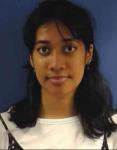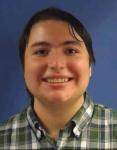Below is a summary of the abstract you submitted. Presenting author(s) is shown in bold.
If any changes need to be made, you can modify the abstract or change the authors.
You can also download a .docx version of this abstract.
If there are any problems, please email Dan at dar78@pitt.edu and he'll take care of them!
This abstract was last modified on March 18, 2024 at 8:49 p.m..

Bacteriophages are the most abundant organisms in the biosphere, and harbor potential as therapeutics for bacterial infections. The isolation and characterization of bacteriophages provide valuable insights into complex evolutionary relationships between phages and their host bacteria. Arthrobacter phage Swim was isolated by enrichment on Arthrobacter globiformis B-2979 from moist soil collected next to a residential driveway in Long Island New York as part of the Science Education Alliance-Phage Hunters Advancing Genomics and Evolutionary Science (SEA-PHAGES) program. Phage Swim forms medium hazy plaques. The genome of Swim was sequenced at the University of Pittsburgh and found to be 20568 bp long with average GC content of 59.2% and predicted to have covalent terminal protein ends. Based on gene content similarity, Swim was placed into cluster FD, which has four other members: Tillums, Mendel, Anjali, and Dunamis. Structural annotation by SEA researchers has identified 33 putative protein coding genes. Based on hazy plaque morphology, phages.db lists cluster FD phages as lytic based on the lack of any integrase or repressor genes. We wanted to reconcile the discrepancy between our wet-lab observations with the predicted lifecycle of the phage based on genome annotation. We were able to identify and purify a lysogen of Swim by three sequential rounds of streak plate isolations followed by patch-assays. Interestingly, even after multiple rounds of purification, we find that not all colonies tested by patch-assay form halos, suggesting that the phage may not exist as a stable lysogen under our conditions. We have demonstrated that the lysogen of Swim provides superinfection immunity to challenge by Swim but not from Arthrobacter phage Argan, an unrelated lytic phage from cluster AU6. We are preparing to expand our superinfection immunity testing to include other FD phages. While we are still annotating the genome of Swim, we have not found any integrase or repressor genes, which is consistent with other previously annotated FD phages. We continue to evaluate the 33 predicted gene products in an effort to find a genomic explanation for our experimental observations. Some temperate bacteriophages do not encode integrases, but rather exist as extrachromosomal plasmids. Such phages have been found to encode plasmid partitioning systems, containing a series of genes that recognize repeat sequences on the genome to ensure that each daughter bacterial cell inherits at least one copy of the phage genome. While Swim might use such a mechanism, the genome is predicted to be linear with covalent terminal protein ends.


